| Srl | Item |
| 1 |
ID:
146951
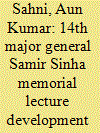

|
|
|
| 2 |
ID:
119129
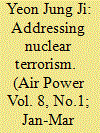

|
|
|
| 3 |
ID:
122609
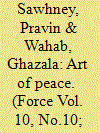

|
|
|
| 4 |
ID:
156116
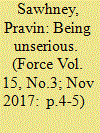

|
|
|
| 5 |
ID:
105889
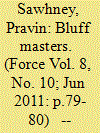

|
|
|
| 6 |
ID:
132165
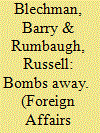

|
|
|
|
|
| Publication |
2014.
|
| Summary/Abstract |
In 1991, U.S. President George H. W. Bush decided to retire almost all the tactical nuclear weapons operated by the U.S. Army and the U.S. Navy. His reasons were simple: these short-range weapons were militarily useless and imposed significant burdens on the armed forces in terms of money, manpower, and time. Twenty-three years later, only one type of tactical nuclear weapon remains in the U.S. inventory: the B-61 gravity bomb. In addition to the several hundred B-61s located at home, the United States currently deploys around 180 of them in Europe, at bases in Belgium, Germany, Italy, the Netherlands, and Turkey. In the event of a nuclear conflict on the continent, NATO would deliver the bombs via U.S.-built F-15 or F-16 aircraft or European-built Tornado fighters, operated by some combination of Belgian, Dutch, German, Italian, and U.S. crews. Originally intended to prevent Soviet forces from penetrating Western Europe, the planes could travel as far east as Russia. But owing to their slower speed and lower altitude, they would be much more vulnerable to Russia's ground-based air defenses than would longer-range strategic bombers and missiles.
|
|
|
|
|
|
|
|
|
|
|
|
|
|
|
|
| 7 |
ID:
129938
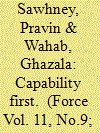

|
|
|
| 8 |
ID:
115598
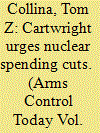

|
|
|
| 9 |
ID:
107384
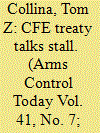

|
|
|
|
|
| Publication |
2011.
|
| Summary/Abstract |
After a year-long, high-level effort by the Obama administration to revive the Conventional Armed Forces in Europe (CFE) Treaty, the process appears to have ground to a halt in May and remained stuck since then.
|
|
|
|
|
|
|
|
|
|
|
|
|
|
|
|
| 10 |
ID:
116300
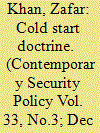

|
|
|
|
|
| Publication |
2012.
|
| Summary/Abstract |
A reaction by the Indian military to a series of violent crises with Pakistan, beginning with the Kargil conflict of 1999, Cold Start Doctrine (CSD) envisions limited attacks on Pakistan territory as non-nuclear retaliation against asymmetric and proxy attacks. Cold Start Doctrine and Pakistani responses show that the South Asian region is still adjusting to the consequences of overt nuclearization in 1998. India and Pakistan remain prone to arms racing and vulnerable to destablization. CSD is part of an action-reaction process, increasing risks of war and the risk that nuclear weapons would be used should war occur. It worsens the natural tension between India's desire for resolution through conventional conflict and Pakistan's declared willingness to escalate to nuclear first use. For India, CSD increases incentives to abandon its previous commitment to nuclear No First Use. Probable Pakistani responses include development of tactical nuclear weapons, forward deployment of nuclear forces, and pre-delegation of launch authority, increasing its problems of force protection, command and control, and escalation control. This article concludes, based on reliable sources, that neither of these war-like strategies benefits the two nuclear rivals as each state's policy options confront certain issues that invite strategic instability in South Asian region and should be reconsidered.
|
|
|
|
|
|
|
|
|
|
|
|
|
|
|
|
| 11 |
ID:
126288
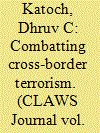

|
|
|
| 12 |
ID:
052619
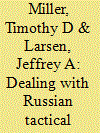

|
|
|
| 13 |
ID:
058220
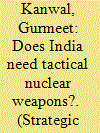

|
|
|
| 14 |
ID:
154815


|
|
|
|
|
| Summary/Abstract |
This article argues that the perceived need by NATO to nurture political cohesion within the Alliance during the 1950s resulted in the adoption of strategic concepts that were out-of-step with the military environment in which it was operating. It maintains that the Alliance acquiesced to American leadership on nuclear issues which led to the development of tactical nuclear capabilities at the expense of conventional war-fighting capabilities for the defence of the European Central Front. This resulted in a strategic concept that enhanced political cohesion but was militarily unviable.
|
|
|
|
|
|
|
|
|
|
|
|
|
|
|
|
| 15 |
ID:
139030
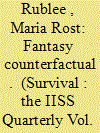

|
|
|
|
|
| Summary/Abstract |
‘If only Ukraine had kept its nuclear weapons, this would never have happened.’ The counterfactual heard around the world after Russia annexed Crimea in March 2014 makes intuitive sense. When the Soviet Union collapsed in 1991, Ukraine became the world’s third-largest nuclear power (behind Russia and the United States), with approximately 1,900 strategic and 2,500 tactical nuclear weapons.
|
|
|
|
|
|
|
|
|
|
|
|
|
|
|
|
| 16 |
ID:
150758
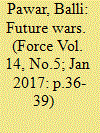

|
|
|
| 17 |
ID:
091876
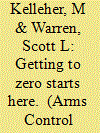

|
|
|
|
|
| Publication |
2009.
|
| Summary/Abstract |
A critical debate on nuclear weapons is once again in the limelight. President Barack Obama has unequivocally, ambitiously, and repeatedly stated his ultimate vision of a world without nuclear weapons. Under the Obama policy, zero nuclear weapons is, for the first time in U.S. history, an operational, tangible U.S. policy goal and thus a measuring stick against which to judge a host of shorter-range, less ambitious initiatives or actions.
|
|
|
|
|
|
|
|
|
|
|
|
|
|
|
|
| 18 |
ID:
142648
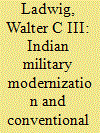

|
|
|
|
|
| Summary/Abstract |
In recent years, headline grabbing increases in the Indian defense budget have raised concerns that India’s on-going military modernization threatens to upset the delicate conventional military balance vis-à-vis Pakistan. Such an eventuality is taken as justification for Islamabad’s pursuit of tactical-nuclear weapons and other actions that have worrisome implications for strategic stability on the subcontinent. This article examines the prospects for Pakistan’s conventional deterrence in the near to medium term, and concludes that it is much better than the pessimists allege. A host of factors, including terrain, the favorable deployment of Pakistani forces, and a lack of strategic surprise in the most likely conflict scenarios, will mitigate whatever advantages India may be gaining through military modernization. Despite a growing technological edge in some areas, Indian policymakers cannot be confident that even a limited resort to military force would achieve a rapid result, which is an essential pre-condition for deterrence failure.
|
|
|
|
|
|
|
|
|
|
|
|
|
|
|
|
| 19 |
ID:
156416
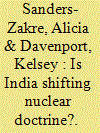

|
|
|
| 20 |
ID:
146717
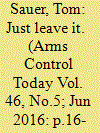

|
|
|
|
|
| Contents |
The biennical NATO summit in Poland next month comes at a time of deeply strained relations between NATO and Russia. The Russian occupation of Crimea is a direct challenge to internationally agreed principles.
|
|
|
|
|
|
|
|
|
|
|
|
|
|
|
|